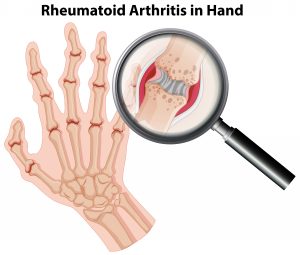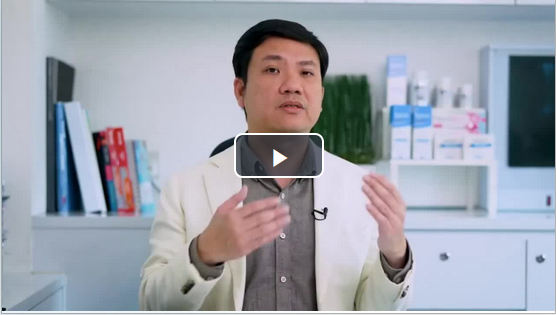What are the Early Signs of Rheumatoid Arthritis?
Rheumatoid arthritis is a chronic inflammatory condition that occurs in both people and animals. Rheumatoid arthritis (RA) may cause joint pain, swelling, and stiffness and can affect multiple parts of the body. The RA process begins when the immune system attacks
a person own tissue, causing inflammation and damage to their mobility. The problems caused by RA are usually located around the joints, but they may also affect the spine, neck, knee, and wrist.
If left untreated, RA can progress to permanent joint damage. If this happens, Rheumatoid arthritis can be life-threatening and results in severe disability. If RA is caught early enough, treatment at the pain care clinic or rheumatoid arthritis clinic can help alleviate symptoms and make life with the condition more manageable.
Here are the common early signs of rheumatoid arthritis that you might want to look out for.
Early Signs of Rheumatoid Arthritis
The early signs of RA often involve pain in one or more joints, stiffness, swelling, and a lack of movement or strength. A person with RA may also have rashes or red patches on their skin, stiffness in their hands or feet, and feelings of extreme fatigue.
While a diagnosis of RA can be made at the pain care clinic in Singapore, it is recommended that you see your GP if you experience any of the symptoms below that persist for more than two weeks.
1) Weakness and Fatigue
The early symptoms of RA are often related to weakness, fatigue, and reduced grip strength. It may also affect the patient’s ability to move from side to side, which can lead to other problems, such as overuse injuries and stiffness.
These symptoms usually occur over a couple of weeks and are often reduced or disappear over time. However, if you have symptoms of this type that persist for more than a couple of weeks, see your GP.
2) Swollen or Inflamed Joints
While most people with RA will develop joint pain, they may also experience swelling and inflammation in their joints, which is known as ankylosis. A person with this type of joint swelling or stiffness may also experience pain, swelling, and stiffness in their hands, wrists, knees, ankles, and shoulders.
People with swollen or inflamed joints may find it harder to sleep at night. Your GP can give you advice on how to cope with swelling and inflammation.
3) Joint Stiffness or Popping Sounds
It’s common for someone with RA to hear popping sounds, such as cracks or pops, when moving their joints. This sound may be caused by inflammation around the joints or by the bones in the joints growing together due to swelling.
5) Numbness or Stiffness in Hands or Feet
It’s important to note that swelling can lead to other symptoms that affect the hands or feet, including numbness and severe pain.
If you have joint swelling or pain, you may also find that you’re not able to move your hands very well. Sometimes the condition can make it difficult for a person to grip items or move their feet in the correct way.
A reduction in the level of flexibility and the movement in the joints can result in long-term problems, such as difficulties with gait and balance.
6) Sleep Problems
People with RA who are sleep deprived may find that they experience mood swings or become lethargic. They may also suffer from heart palpitations, constipation, and headaches.
Other Rare Symptoms of RA
The symptoms of RA are usually very common. Although it is important to have any of the symptoms of RA checked out by your GP, this does not mean that other symptoms of RA cannot occur.
RA can cause several other rare symptoms that can cause pain, discomfort, and affect a person’s everyday life. These can include:
1) Limping
One common symptom of RA that some people with the condition will experience is a limp. Symptoms of this type of arthritis usually begin in the knee, hip, or ankle and can occur at any joint in the body.
2) Anemia
In rare cases, RA can cause anemia. This is often accompanied by a change in the levels of red blood cells and their ability to carry oxygen to the body. This could lead to a feeling of tiredness.
3) Painful Skin Lesions
RA can also lead to skin lesions, which appear as a red, bumpy, sore spot on the skin. These lesions may be painful and will vary in size and may appear on the face, body, or the palms and soles of the feet.
It is usually recommended that a person with this type of rash consult a doctor.
4) Weight Loss
RA can also cause weight loss. A person with RA may find that their weight reduces significantly due to lack of energy, pain, fever, fatigue, and a loss of appetite.
When Should I Make an Appointment at the Rheumatoid Arthritis Clinic?
If you believe yourself to have any of these signs of RA, it’s best to consult your GP and make an appointment at the rheumatoid arthritis clinic. If you have not previously been diagnosed with RA, your doctor will likely check for:
If you are positive for RA, your doctor will provide you with an immediate treatment plan. Although there are no known cures for RA, it’s best for you not to worry as the doc will assist you in every way she or he can. Remember to stay healthy in the meantime.
What To Expect When I Visit The Pain Relief Clinic
A typical visit will involve our doctor first understanding your medical history, concerns and previous experience with other pain treatments.
For patients who have consulted many people but have yet to receive a clear diagnosis, selecting an affordable imaging scan might be recommended to confirm the cause of your pain..
Some patients have already done scans with other doctors for their pain condition but are still not clearly told what they suffer from.
Dr Terence Tan is happy to offer you a second opinion and recommend how best to manage your condition.
We also see patients who already have a confirmed diagnosis from specialist pain doctors, but are "stuck” because treatment options offered are not practical or acceptable.
We can help by discussing options that you might have potentially never been told of.
A common experience is when a patient has already consulted a specialist doctor for pain management and is told to consider orthopaedic surgery which they find too aggressive.
Or they may have seen doctors for their pain and were prescribed painkillers with potential side effects which made them feel uncomfortable.
Many of our patients have also first tried complementary treatments or acupuncture with traditional Chinese pain doctors.
They look for a second opinion after finding any relief experienced from other treatments to be temporary or requiring repetitive treatments, which add up to time and cost.
Especially in such situations, we emphasize using non-invasive medical technology you likely have not been told about .
This can make a big difference to your results.




 Click For Live Back Pain Workshop
Click For Live Back Pain Workshop


